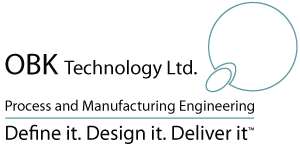WFIRO™ GREEN continued…
Environmentally friendly operation.
No hazardous chemicals are used during its operation.
Heating and cooling systems are not required.
Heating and cooling systems are not required for operating of the technology. This reduces the equipment spend that reduces the environmental foot print and saves on fossil fuels and electrical requirements during operation.
Maintains energy within the system.
The energy input into the water via the pump is maintained within the system during recycle/cleaning mode.
Saves energy during hot water sanitization.
Systems that employ hot water sanitization use less energy in heating the water since the total volume of water to be heated is reduced.
Uses less real-estate.
The technology takes up less room that conventional systems thus saving on building, facilities services and land resources.
Less maintenance.
The VFD extends the life of the pump and motor. The simple system design requires
less maintenance. Available resources can then be applied to more productive endeavours.
A water purification system that can save costs and be differentiated will be successful in the market place. The patented variable frequency drive (VFD) 2 pass reverse osmosis technology offers additional operational benefits for cost reduction and differentiation:
Prevents growth of microorganisms.
A natural component of source water is carbon dioxide. This natural component is utilized to create an acidic environment (via carbonic acid) within the purification process and delivery system to prevent the growth of the types of organisms that are capable of growing in purified water.
Allows system to clean itself.
When the system is not producing purified water at a point of use it automatically reduces the systems production rate and allows the system to enter into a recycle/clean erode with a corresponding high recovery rate. This state recycles the purified water and carbon dioxide which cleans the first pass membranes due to the lower pH coupled with the cleanliness of the water (as explained in Figures 10, 11 and 12 of the patent). Since carbon dioxide is not rejected by the reverse osmosis membranes it is free to pass through the first and second pass membranes. Each membrane pass reduces the bicarbonate (pH buffering ion) concentration but allows the carbon dioxide to pass. A new equilibrium is established at a much lower pH since the equilibrium has been shifted to the acid condition. The low pH environment cleans the system of deposits and prevents the growth of microorganisms.
Reduces biofilm formation.
Automatically controls the water velocity within the purification process and delivery system to prevent the settling of microorganisms onto surfaces where they can reproduce to form biofilm. The flow conditions are constantly maintained under turbulent conditions by ensuring a velocity of 3 feet per second or greater. The velocity in conjunction with the reduced pH creates conditions that are not conducive for biofilm formation.
Prevents hydraulic shocks in the system.
The VFD controls the increase or decrease in production rate during purified water draw off from the system. In addition it prevents hydraulic shocks during the start up process after a power failure. It also controls the flow of water within the system to maintain a velocity below 10 feet per second.
Controls heat distribution during hot water sanitization.
The production and circulation rate is controlled during hot water sanitization. In addition the applied membrane pressure is controlled to prevent damage of the RO membranes.
Conserves hot water during hot water sanitization.
The VFD controls the circulation rate and pressure of the hot water to ensure that all of the product water, the first pass reject water and all of the second pass reject water is recycled back through the heat exchanger and the entire purification and delivery system. Heat storage reservoirs are not required which reduces the total head load during sanitization.
Automatically starts the system after a power failure.
The VFD automatically initiates the slow start up procedure after a power failure to reduce ware on the pump and brings the water quality up to specification.
Flushes the system of poor quality product water.
When water quality is below and out of specification in either temperature, conductivity or TOOTOC (with onboard TOOTOC instrument) the system flushes the reject and a drain valve opens up to a preset position or a second drain valve is employed to increase the volume of reject water to flush the system. The VFD increases the water volume to accommodate the flushing procedure.
Automatically or manually controls production rate.
The ability to increase or decrease the production rate is controlled by the VFD. Manual control is conducted by the VFD control module. Automatic control is performed by the flow sensorls located at the beginning and/or at the end of the delivery piping system.
Eliminates a Clean In Place (CIP) system.
The VFD is used to control the flow volume and reduce pressure during a system cleaning. Cleaning chemicals can be dosed into the system with appropriate chemical neutralization on the first pass reject. CIP strongly recommended for the occasional cleaning and remove of organic and inorganic materials
Back

